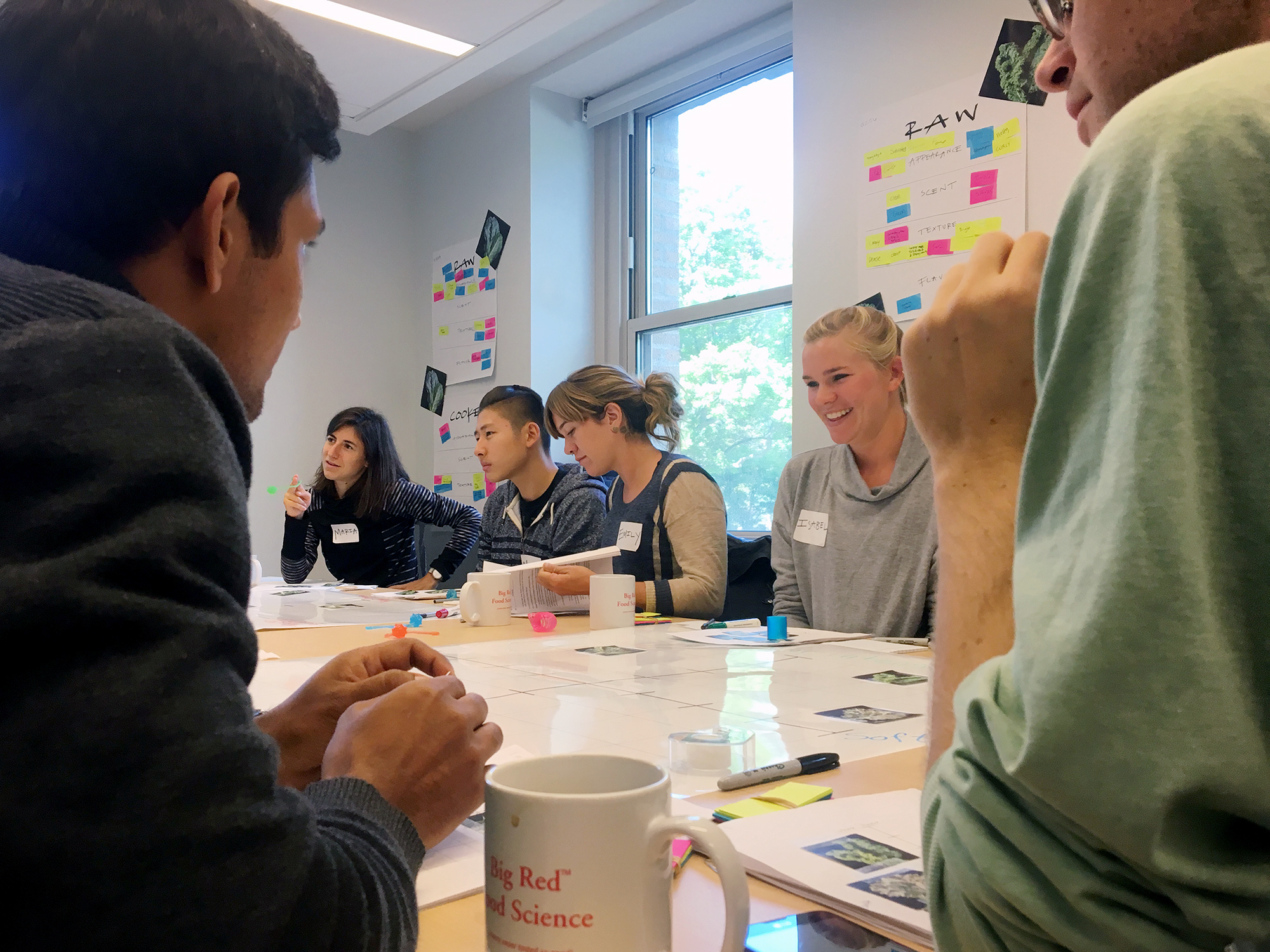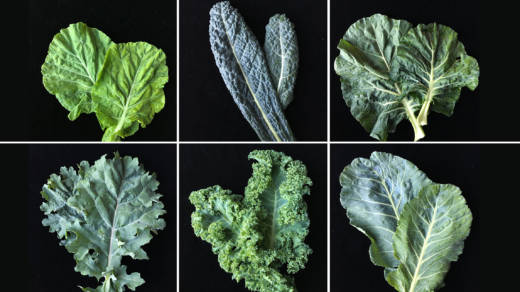Kale is getting a makeover, and the very essence of kaliness may hang in the balance.
To develop a new variety of kale tailored to American palates, horticulture professor Philip Griffiths of Cornell University College of Agriculture and Life Science and graduate student Hannah Swegarden are soliciting consumers' kale reflections — the good, the bad, and the ugly. The scientists face a philosophic question for the ages. Asks Swegarden:
"How far can you push a consumer's concept of what kale is, before it's not kale anymore?"
Kale, like many other vegetables, has been bred with agricultural practicality in mind, selected for virtues like drought- and disease-resistance. But Swegarden says those traits don't necessarily translate into a better taste and appearance, qualities that matter more to consumers. Griffiths has been working with kale for years, so he and Swegarden decided to see if they could develop strains to seduce farmers and consumers alike.
As the first step in their research, the scientists organized a focus group in September with 14 people who self-identified as liking and consuming kale. They sent the participants home with six different kale types varying in shape, color, texture and taste. The kaleblazers prepared each kale variety as they wished and recorded their impressions in journals. (Yes, kale journals.)

After two weeks, the participants came together to discuss their feelings about kale for three hours. "By the time they came in, they were really knowledgeable," says Swegarden.
